Table of contents
The term buckwheat refers to the common buckwheat ( Fagopyrum esculentum ), as opposed to the Tatar or false buckwheat ( Fagopyrum tataricum ). Buckwheat seeds are edible raw and cooked.
Use in the kitchen
Buckwheat is a pseudocereal and therefore gluten-free. The seeds have a nutty taste and peeled buckwheat can be eaten raw. How can you prepare buckwheat? Buckwheat can be prepared in a variety of ways. However, eating cooked buckwheat is the norm. In principle, you can prepare many rice recipes with buckwheat instead of rice. Real buckwheat is suitable, for example, for making a gourmet risotto.
Buckwheat can be cooked to make porridge or desserts. Buckwheat flour, which cannot be baked on its own, can be used as a gluten-free flour substitute 1 and for thickening soups and sauces. For baking, you need double the amount of other types of flour. When cooking, you also use double the amount of water. Use the lowest setting for 15 minutes without stirring.
Can you eat buckwheat raw? Yes, you can eat peeled raw buckwheat seeds uncooked, but eating buckwheat leaves raw is only recommended to a limited extent due to their irritating effect. They should only be eaten raw in small quantities, e.g. as finely chopped and seasoned herbs in salads. Briefly cooking the leaves improves the astringent taste a little. 1 peeled buckwheat (uncooked), but previously soaked in lukewarm water or germinated - can be sprinkled over salads or used as a base for vegetable patties or vegetable fillings. Buckwheat flakes can also be eaten raw, e.g. as a tasty addition to your morning muesli . Eating buckwheat flour raw is only enjoyable in small quantities, for example sprinkled into a dish.
Buckwheat porridge or groats are known in Russian, Ukrainian and Polish cuisine. In northern Italy and southeastern Switzerland, buckwheat flour is used to make pasta (pizzoccheri) and polenta. Pancakes made from buckwheat flour are called "galettes" in France, "blinis" in Russia, "poffertjes" in the Netherlands, "bookweiten-janhinnerk" in East Frisia and "schwarzplenten" in the Eifel, North and South Tyrol. Buckwheat flour is also often used in the USA for the famous pancakes. In South Tyrol, the Bozen buckwheat cake (Schwarzplentener cake) is known, in Westphalian cuisine, panhas (meat pie with buckwheat flour) and in Styria, Carinthia, Slovenia and Luxembourg, a hearty Sterz made from buckwheat flour (similar to "Schmarrn"). The popular soba noodles from Japan are traditionally made from buckwheat.
For sprouted buckwheat, use the link. The article on soaking and sprouting is also interesting.
Vegan recipe for oriental buckwheat salad
Ingredients (for 4 people): 200 g buckwheat, approx. 400 ml water , 100 g red lentils (cooked) , 1 zucchini (raw), 1 carrot (raw), 100 g cherry tomatoes , 4 dates , 1 avocado , 1 spring onion , fresh herbs such as coriander leaves , parsley , green mint , basil . For the dressing: juice of one lemon , 1 tbsp rapeseed oil , 1 pinch of turmeric (ground), 1 pinch of cumin (ground), sea salt ,pepper .
Preparation: Boil the buckwheat in twice the amount of water. After cooking for about 10 minutes, strain the buckwheat while it is still slightly firm and allow to cool. Use a vegetable peeler to cut the zucchini and carrot into thin strips. Quarter the cherry tomatoes and chop the dates and spring onions. Chop the fresh herbs as desired. For the dressing, mix together some salt, pepper, turmeric, cumin, lemon juice and cold-pressed rapeseed oil. Mix the dressing, lentils and pre-cut ingredients with the buckwheat. Finally, carefully fold bite-sized pieces of avocado into the buckwheat salad.
Vegan recipe for blinis
Ingredients: 150 g buckwheat flour, 50 g wheat flour , 0.5 tsp salt , 1 packet of baking powder , 2 tsp apple cider vinegar , 200 to 450 ml oat drink , some refined rapeseed oil .
Mix flour, salt and baking powder. Add apple cider vinegar and oat milk and make a creamy or runny dough. If you use less liquid, you get airy, slightly thicker blini patties. Thin pancakes are possible with runny dough. After letting them soak for about 20 minutes, fry the blini in a hot pan with a little oil.
Recipe for tea with buckwheat seeds or buckwheat herb
Buckwheat tea can be made from either the herb or the buckwheat seeds. Pour a teaspoon of buckwheat seeds or a tablespoon of buckwheat herb (Herba Fagopyri) into a cup of boiling water and then let the mixture simmer for 3 minutes. After letting it steep for 10 minutes, pour the tea through a fine sieve. Drink two to three cups of the tea daily as a cure over a period of four to eight weeks.
Vegan recipes with buckwheat can be found under the note: " Recipes that have the most of this ingredient ".
| Not only vegans or vegetarians should read this: Vegans often eat unhealthily. Avoidable nutritional mistakes . |
Purchasing - Storage
Peeled buckwheat seeds can be bought from supermarket chains such as Edeka , Rewe , Coop , Spar , Billa , Volg or Migros as well as in Russian grocery stores. They are rarely available in the permanent range at Denner , Aldi , Lidl or Hofer . In online shops, organic shops or organic supermarket chains such as Alnatura or Denn's Biomarkt, you can get not only the seeds but also buckwheat flakes, buckwheat flour, buckwheat flakes, buckwheat crackers, groats and even pops made from controlled organically grown buckwheat (organic quality).
Unhulled buckwheat is less available for consumption, but rather as seed. Unhulled buckwheat is inedible, the shell is too hard. Unhulled buckwheat can be recognized by the red color (fagopyrin) of the shell. A gentle shelling process guarantees good germination of whole buckwheat seeds even after shelling. Roasted buckwheat has a similar color to unhulled buckwheat. This form is very popular in Russian dishes.
What is heather flour? Buckwheat flour can be bought under the name "heather flour". Buckwheat herb is available as loose tea or in portioned tea bags online, in drugstores, pharmacies or health food stores.
In Latvia, Lithuania, Poland and Russia, supermarkets offer buckwheat in convenient, pre-portioned packages (griķi, gritji, гречка) that look like quick-cooking rice bags.
The availability of buckwheat varies depending on the size of the store, catchment area, etc. If you are interested, click on our recorded food prices for the DA-CH countries (above under the ingredient image). There you will find current prices from various supermarkets and their price development.
Found in the wild
In Central Europe, wild buckwheat ( Fagopyrum esculentum ) can be found on paths, forest edges, rubble and weedy areas. The wild stands only last a few years and mostly come from cultivation or sowing. 2
When does buckwheat bloom? Buckwheat's main flowering period is July to September. 2 The harvest season varies depending on the region and climate and begins in late summer, mid to late September . 1 Leaves and flowers can be harvested when they start to bloom and dried for infusions and tea preparations. 3
Storage tips
Raw buckwheat (seeds), dried buckwheat leaves and buckwheat flowers should be stored dry, protected from light and tightly sealed. This extends the shelf life and prevents quality losses due to pest infestation, mold formation or oxidation losses. It is better to buy smaller quantities to avoid the grains becoming rancid.
Ingredients - Nutritional values - Calories
Buckwheat seeds have 343 kcal/100g and are rich in carbohydrates (72%), of which 10% is fiber. They contain little fat (3.4%) and up to 13% protein. The really essential amino acids threonine (0.51 g/100g = 54% of the daily requirement) and lysine (0.67 g/100g = 36% of the daily requirement) are well represented. Lysine is only found in moderate amounts in the native European grain varieties and is therefore considered a limiting amino acid in wheat (0.32 g/100g) or spelt (0.41 g/100g). 1 Other types of pseudocereals have a similar or higher lysine content than buckwheat seeds ( amaranth, raw : 0.75 g/100g; quinoa, raw : 0.77 g/100g; chia seeds, raw : 0.97 g/100g). 4
The protein in buckwheat has a high biological value of 80-93. In comparison, whole eggs have a biological value of 100. Combining buckwheat with a grain such as wheat or spelt can lead to a biological value of 100. 5
Buckwheat contains a good amount of manganese (1.3 mg), which covers about 65% of the daily requirement. Pistachios and fenugreek seeds have a similar amount. Unpeeled hemp seeds exceed this amount many times over (7.6 mg). 4
Magnesium also has a significant amount of 231 mg/100g, similar to wheat germ or fermented cocoa beans .Pumpkin seeds contain almost twice as much of this element, at 592 mg/100g. 4
All parts of the buckwheat plant contain flavonoids, tannins, colorants, proteins, B vitamins , calcium and silica. The flavonoid rutin can be detected at up to 5% in the seeds 1 , up to 8% in the leaves, up to 4% in the flowers and up to 0.4% in the stems. The total flavonoid content in the herb varies depending on the variety and location of the buckwheat.
Unpeeled buckwheat contains valuable minerals and fiber as well as phytic acid in its outer layers. Phytic acid can form insoluble or difficult to digest complexes with food proteins, minerals and trace elements. Here you can find out how to reduce phytic acid and also that it has positive properties.
Buckwheat is gluten-free, very healthy and seems to be able to compete with other so-called superfoods. Nevertheless, we consider this description to be exaggerated.
The complete ingredients of buckwheat, the coverage of the daily requirement and comparison values with other ingredients can be found in our nutrient tables. In the article Nutrients explained you will get a detailed insight into the topic.
Health effects
The polyphenols contained in buckwheat (rutin and quercetin) have shown strong antioxidant activity in animal studies and can thus delay the onset of chronic diseases such as cancer, inflammation, hypercholesterolemia and neurological diseases. 6
Buckwheat can lower blood sugar levels and increase glucose tolerance, which is why it is said to have a positive effect on diabetes. 7
Studies on humans and animals showed a reduction in total cholesterol and triglyceride concentrations through the consumption of buckwheat. However, there were also large deviations and a connection between increased buckwheat consumption and an improvement in cardiovascular diseases is not clear. 8
The gluten-free pseudocereal buckwheat is suitable as a dietary food for people with celiac disease (sprue, gluten-sensitive enteropathy). Look for the gluten-free symbol, which only licensed products are allowed to carry.
Dangers - Intolerances - Side effects
Buckwheat contains fluorescent phototoxic fagopyrins, which can cause fagopyrism if large amounts of buckwheat sprouts, buckwheat herb and flowers, and buckwheat extracts rich in fagopyrin are consumed. The fagopyrin contained in it, a red dye from the fruit shell, can have a phototoxic effect when exposed to light and increase sensitivity to harmful UV radiation (photosensitization). Possible physical effects in sensitive people include burns, tingling and numbness in the hands and sensitivity to cold. However, normal consumption amounts are harmless. 9 It is also assumed that peeled buckwheat, as it is available in stores, does not cause any symptoms. If unpeeled Tatar buckwheat is fed to weakly pigmented animals, fagopyrism occurs more frequently. 10
Use as a recognized medicinal plant
Buckwheat is the medicinal plant of the year 1999, named by the interdisciplinary study group on the development history of medicinal plants at the Institute for the History of Medicine at the University of Würzburg . The choice of medicinal plant of the year is intended to emphasize the medical importance of buckwheat and its pharmaceutical use.
The rutosides (rutin) contained in buckwheat seeds and the green parts of the plant are used medicinally for venous disorders (chronic venous insufficiency), microcirculation disorders and for the prevention of arteriosclerosis. 11 A tea preparation can be helpful for venous and vascular weakness and can be used as an accompanying treatment for arteriosclerosis and varicose veins. 1
Folk medicine - natural healing
In folk medicine, buckwheat is also used to stop bleeding, treat retinal bleeding, venous congestion and to stimulate milk secretion in women who have recently given birth. 1
Ecological footprint - animal welfare
Buckwheat often comes from China, which has come a long way and therefore probably has a bad ecological footprint . However, there are hardly any specific studies on the emissions produced by buckwheat cultivation and the ecological CO 2 footprint . A Polish study from 2022 compared different production methods of different varieties of buckwheat from Poland; the values given here are between 0.16 kg CO 2 eq/kg and 0.28 kg CO 2 eq/kg. 17 As a niche product, buckwheat is also back in the DA-CH countries and is steadily increasing. In addition, the laws, standards and controls in European countries with regard to soil protection, pesticides and socio-economic standards are much stricter, 12 which is why domestic buckwheat is preferable to that from overseas.
The amount of water required to produce 1 kg of buckwheat is 3142 litres, similar to the amount for sorghum (3048 litres), but significantly more than for cereals such as oats (1788 litres), wheat (1827 litres) or barley (1423 litres). 18
Buckwheat has weed-suppressing properties, although the exact reasons for this are still unclear. This property is evident both in growing buckwheat and in buckwheat residues incorporated into the soil, which could offer an opportunity to save on the herbicides often used in conventional agriculture. 19
Worldwide occurrence
Where does buckwheat come from? True buckwheat is considered an ancient crop. Buckwheat originally comes from Central to East Asia. Its genetic center is thought to be in the Amur region (a river in China and Russia that flows into the Pacific). In the Middle Ages, the Mongols probably brought buckwheat to Central Europe. In Europe, it grows primarily in heathland areas, low mountain ranges, and the southern Alpine region (Carinthia, Styria). 13
Where is buckwheat grown in Germany? In Germany, buckwheat is grown in heathland areas, such as the Lüneburg Heath or in Brandenburg. The first evidence shows that it was grown in the Rhineland in the 13th century; it was considered a pioneer plant on heathland moors. 13
Possibility of confusion
Closely related to common buckwheat is Tatar buckwheat or false buckwheat ( Fagopyrum tataricum ), which is used in a similar way to common buckwheat ( Fagopyrum esculentum ). The leaves are wider than they are long in the case of the false buckwheat and serve to distinguish it from common buckwheat. Another characteristic is the stem, which is green and not red when the false buckwheat is in fruiting season. 14 Ingredients and effects are comparable to those of common buckwheat. The main flowering period of the species (which is endangered in Switzerland and parts of Austria) is from July to September. 1
Cultivation -
Harvest Buckwheat is a heat-loving plant and suffers cold damage at low temperatures (1.5-2.5 °C). Its soil requirements are low, but loose, sandy, slightly alkaline soils are ideal. Unhulled buckwheat of organic quality is suitable as seed. Buckwheat needs a soil temperature of over 8 °C to germinate, which is why it can be sown in Central Europe from mid-May at the earliest. 15
In commercial cultivation, the harvest takes place when around 70% of the seeds are ripe (irregular ripening) between mid and late September. Because of its sensitivity to the weather, buckwheat yields vary greatly. On average, yields are around 10 to 30 dt/ha. Cleaning and drying after harvest is important because buckwheat is susceptible to mold. In addition to grain production, buckwheat is also used as green manure, green fodder or as bee pasture. 15
For human consumption, the husk (husk, wood fiber layer) of the buckwheat is removed mechanically in special husking mills. The slightly darker, red-brown husk is very hard and is almost inedible, even after cooking. Thanks to a particularly gentle husking process, the whole grains are still capable of germinating, provided they have not been roasted or otherwise heated beforehand. When husking, there is a high loss of whole grains (50-60%), as the seeds break easily. This broken part is used for buckwheat flour, buckwheat flakes, buckwheat semolina, etc. 15
Buckwheat is a slender, annual plant with upright, reddish stems. The leaves are broad, triangular and up to 7 cm long. The flowers appear in clusters in summer and are small, fragrant and pink to white. The seeds of the 20 to 60 cm tall plant are triangular, brown and about 6 mm long. 3
Animal protection - species protection - animal welfare
Buckwheat is considered a good bee forage plant and the honey yields are comparable to those of rapeseed or phacelia. Each individual flower produces approx. 0.2-0.4 mg of nectar, with a sugar content of 7-45% the sugar value (within 24 hours) is approx. 0.03-0.17 mg. 16
The flowers open around 25-30 days after sowing, i.e. from around mid-June. Each flower only opens for one day, but one plant has up to 2000 flowers. Buckwheat fields therefore offer a long flowering period and are a welcome source of food for many insects. The relatively late flowering period from June/July to August/September is not otherwise found in the agricultural landscape. 16
Further information
What is buckwheat? The general term buckwheat usually refers to true buckwheat ( Fagopyrum esculentum ). This comes from the buckwheat genus ( Fagopyrum ) and belongs to the knotweed family (Polygonaceae). Buckwheat is a pseudocereal because, unlike the "true cereals", it is not a monocotyledonous plant, but a dicotyledonous one.
In addition to buckwheat, a member of the knotweed family, the amaranth family ( Amaranthus ) and quinoa ( Chenopodium quinoa ) are important for nutrition. Kañiwa or Cañihua ( Chenopodium pallidicaule ) is closely related and used in a similar way. The seeds of the Mexican chia ( Salvia hispanica ) from the mint family are also known as pseudocereals.
Alternative names
Common or lesser known names for true buckwheat are common buckwheat, buckwheat seeds, heather grain, heather, heather porridge, heather grain, heather barley, blende, blende, brein, bokert, black Welschkorn, black plent, black polenta, gricken (lit. Grikiai), tater, Saracen grain or Turkish wheat.
Latin synonyms for Fagopyrum esculentum are Fagopyrum cereale , F. sagittatum , F. sarracenicum , F. vulgare , Phegopyrum esculentum , Polygonum cereale and P. fagopyrum .
Medical names for buckwheat herb are Fagopyri herba syn. Herba Fagopyri. Buckwheat herb that contains leaves and flowers of the plant harvested and dried during flowering is called Fagopyrum esculentum herb.
In Spanish, buckwheat is called alforfón or trigo sarraceno. The English name is buckwheat or Japanese/ silverhull/ common buckwheat.
Bibliography - 11 Sources
| 1. | Fleischhauer, S. G., Guthmann, J., Spiegelberger, R. Enzyklopädie. Essbare Wildpflanzen. 2000 Pflanzen Mitteleuropas. 1. Auflage: Aarau: AT Verlag; 2013. |
| 2. | wikipedia.org Echter Buchweizen. |
| 3. | Bown, D. Kräuter. Die grosse Enzyklopädie. Anbau und Verwendung. 2. Auflage. München: Dorling Kindersly; 2015. |
| 4. | awl.ch Heilpflanzenlexikon. Echter Buchweizen – Fagopyrum esculentum. |
| 5. | ugb.de (Unabhängige Gesundheitsberatung). Ist bei einer rein pflanzlichen Kost die Proteinqualität ausreichend? |
| 6. | heilkraeuter.de Kräuterlexikon. Buchweizen (Fagopyrum esculentum Moench). |
| 7. | USDA (United States Department of Agriculture). Nährstofftabellen. |
| 8. | pharmawiki.ch Rutosid (Rutin). |
| 9. | tfz.bayern.de (Technologie- und Förderzentrum TFZ Bayern). Anbauhinweise Buchweizen. PDF. |
| 10. | biofarm.ch Buchweizen – der summend schöne Ewigblüher. |
| 11. | wikipedia.org Amarant |

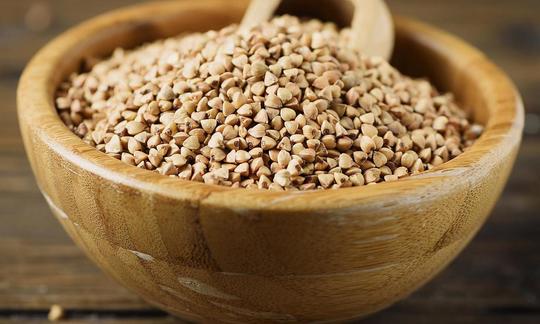

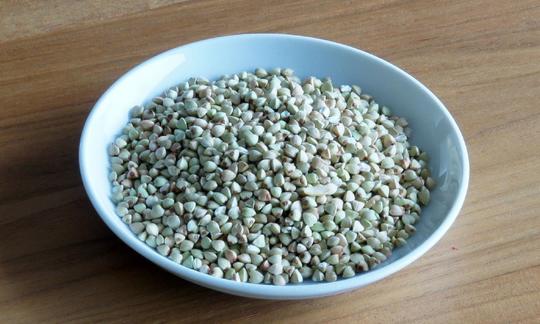

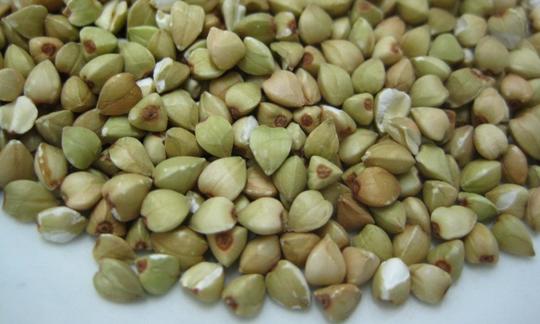

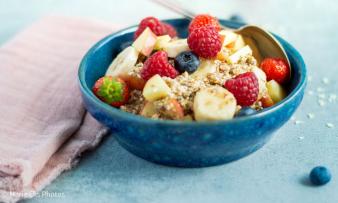
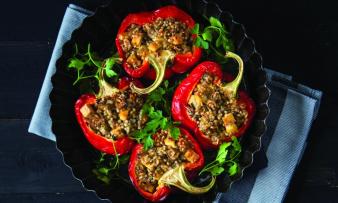
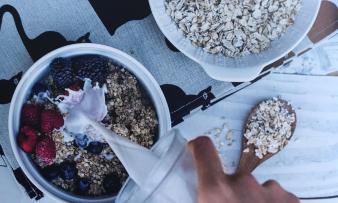





Comments